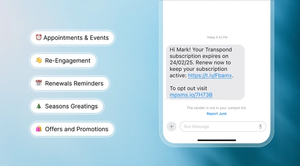Marketing is a vital component of any small business's success, but it often presents unique challenges that can seem overwhelming. Small business owners and marketing managers frequently juggle multiple roles, from customer engagement to brand promotion, often with limited resources.
This comprehensive guide will explore the obstacles you might encounter across three key areas including marketing resource challenges, brand awareness and customer acquisition challenges, and measurement and optimization challenges.
By understanding these hurdles and the strategies to navigate them, you can develop a marketing plan that drives results and sets your small business on the path to success.
Marketing resource challenges
Navigating resource limitations is a common theme for small businesses, especially when it comes to implementing effective marketing strategies. This section explores five significant challenges related to resources - from financial constraints to technological integration - offering actionable solutions to help you make the most of what you have while maximizing your marketing impact.

1. Limited budget
Managing a tight marketing budget effectively is a critical concern for small businesses aiming to maximize their reach without breaking the bank.
Stretching a limited budget involves not only identifying cost-effective marketing channels but also investing in strategies that yield a high return on investment (ROI).
This could mean prioritizing digital marketing efforts that allow for detailed tracking and targeting, such as social media and email marketing, which offer both affordability and effective engagement with potential customers.
You can avoid this challenge by exploring free marketing tools that offer robust features, such as Canva for graphics or Mailchimp for email campaigns.
Also, focus on community-building efforts on social media to naturally boost your visibility without substantial ad spend.
2. Lack of marketing expertise
The gap in marketing expertise is a significant barrier for many small businesses. This challenge can be mitigated by empowering existing employees through training, tapping into the gig economy for specific marketing projects, or investing in automation tools that simplify complex marketing tasks.
By developing a foundational understanding of marketing principles among your team or outsourcing complex tasks, you can build a more strategic approach to your marketing efforts without the need for a large, specialized staff.
If you are faced with a lack of marketing expertise, use online learning platforms like LinkedIn Learning or Coursera to enhance your team's marketing skills.
Partnering with freelance experts for specialized tasks like SEO optimization or ad campaign management is another great way to optimize your marketing efforts.
Emily Morgan, Chief Marketing Officer:
“Small businesses are often working with a small team and a tight budget. It's a constant balancing act between creativity and strategic thinking as you need to focus your efforts on high-impact and cost-effective tactics.
This could be utilizing free marketing tools or prioritizing community engagement. Whatever you choose, be sure that every penny is used intentionally to drive meaningful growth and success.”
3. Struggling with content creation
Creating consistent, engaging content that resonates with your audience can be daunting without the right strategies and tools.
Small businesses must focus on understanding their audience deeply to create content that truly speaks to them. Implementing a content calendar, encouraging customer interaction for content ideas, and repurposing successful content across different mediums are practical steps to streamline content production and ensure it aligns with audience interests and business goals.
If you’re struggling with content creation, develop a content calendar that aligns with major industry events or seasonal trends relevant to your audience.
Use customer feedback and engagement metrics to guide your content development strategy and make data-driven decisions.
4. Navigating data complexity
Handling large amounts of data can be overwhelming for businesses and they often don’t know where to start. Simplifying your focus by concentrating on a few KPIs that directly reflect your marketing goals can make the process more manageable. Tools that integrate easily with your existing platforms can automate data collection and analysis, providing actionable insights that help refine your marketing strategies.
Incorporate simple, user-friendly analytics tools like Google Analytics to monitor website traffic and engagement. Also, regularly review customer conversion paths to adjust marketing strategies accordingly.
5. Technology adoption hurdles
Adopting new technologies often presents a significant challenge, particularly for small businesses with limited time and resources to dedicate to learning new systems. However, focusing on technologies that offer straightforward, scalable solutions can alleviate these pressures.
Evaluating new tools through free trials, seeking out community advice, and choosing technologies with strong customer support can help integrate these tools more smoothly into your business operations.
Size up new technologies by starting with a free trial to assess compatibility and ease of use, Attending webinars or online training sessions can help you to quickly gain a functional understanding of new tools.
Brand awareness and customer acquisition challenges
Businesses face a range of problems, especially when trying to enhance their brand awareness and acquire new customers.
These five challenges focus on the essential aspects of carving out a niche, reaching the right demographic, generating leads, forging lasting relationships, and ensuring content reaches its intended audience.

6. Standing out in a crowded marketplace
Differentiating your brand in a market flooded with competitors is an immense challenge for any small business. To effectively stand out, it’s crucial to define a unique selling proposition (USP) that sets you apart. Develop a compelling brand voice that speaks authentically to your target audience and craft messaging that highlights your distinct advantages.
Focusing on a well-defined audience ensures your marketing efforts are concentrated on those most likely to respond, making your strategies more effective and resource-efficient. Evaluate your competitors and pinpoint what they are missing that your business can provide.
Tailor your brand messaging to speak directly to your target audience's desires and needs.
7. Reaching the right audience
The challenge of pinpointing and engaging with your ideal customer base can significantly impact your marketing effectiveness. To overcome this, conduct thorough market research to understand the demographic and psychographic factors that define your audience. Develop detailed buyer personas that reflect the characteristics of your ideal customers.
Use the targeting capabilities of social media platforms to ensure your marketing messages reach the people most likely to engage with your brand, thereby increasing campaign relevance and effectiveness. Social media analytics help you to gather data about your followers and adjust your targeting strategies based on these insights.
Regularly update your buyer personas based on customer feedback and market trends to keep your strategies aligned with audience preferences.
8. Lead generation struggles
To generate high-quality leads, focus on creating compelling lead magnets such as ebooks, whitepapers, or free trials that provide value in exchange for contact information.
Optimize your landing pages to ensure they are clear, convincing, and designed to convert visitors into leads. Implement an effective email marketing strategy to nurture these leads by providing them with relevant information and engaging content at each step of the customer journey.
Design landing pages specifically for your lead magnets that minimize distractions and focus on converting visitors. Segment your email list to deliver more personalized and targeted nurturing campaigns.
9. Building relationships and trust
Maintaining relationships with customers and developing trust is essential for turning a one-time buyer into a loyal advocate. Prioritize excellent customer service as a cornerstone of your business's value proposition. Engage actively with your audience on social media platforms to build a sense of community.
Focus on transparency and consistency in your communications to create and maintain trust over time. These efforts help encourage a loyal customer base that not only continues to buy but also champions your brand in their networks.
Implement a customer feedback system to show your customers that their opinions are valued and taken into consideration for business improvements.
Develop a consistent schedule for social media posts and interactions to keep your audience engaged and informed.
10. Content distribution dilemmas
Producing great content is only half the battle—ensuring it reaches and engages the right audience is equally critical. Optimize your content for search engines to improve visibility in search results. Use social media platforms to promote your content and engage with followers.
Collaborate with influencers and other businesses in your industry to extend your content’s reach and credibility. Also, explore partnerships with influencers who can help amplify your content's reach within your target market.
Investigate which content formats your audience engages with the most and focus your efforts on creating more of the same type.
These strategies help overcome the challenge of content saturation and ensure your messages are seen by those who matter most to your business.
Measurement and optimization challenges
Looking deeper into the measurement and optimization aspects, this section tackles how to assess marketing effectiveness and refine strategies for optimal results. Here are five key challenges small businesses face, with practical approaches for navigating them.

11. Tracking marketing performance
Measuring the performance of your marketing initiatives is essential for understanding the impact of your efforts. Integrate conversion tracking tools that monitor specific customer actions, and analyze website traffic data to uncover the origins and behaviors of your visitors.
You can also employ marketing dashboards that offer real-time visualization of key metrics. These steps will help you make data-driven adjustments to your marketing strategies, enhancing the precision and effectiveness of your campaigns.
Set up in-depth conversion tracking in your analytics platform to better understand which marketing activities are driving results.
Regularly review your dashboard metrics to quickly identify trends and adapt your strategies accordingly.
12. Making data-driven decisions
Translating raw marketing data into actionable insights is a significant challenge that can stall the decision-making process. Use A/B testing extensively to compare different marketing strategies, and pinpoint which elements work best for your audience.
Analyzing customer behavior patterns will help you spot valuable insights that can refine your targeting and messaging. This rigorous approach to data analysis ensures that every marketing decision is grounded in empirical evidence, maximizing the impact of your strategies.
Use analytics tools to segment your audience based on behavior and tailor campaigns to these segments.
Dan Duran, Head of Marketing says:
"Small businesses constantly face challenges both sourcing and using accurate customer data. Additionally, legal requirements are constantly shifting, and as technology evolves too it’s getting harder to stay at the cutting edge of marketing and remain effective.
Integrated solutions can really help you to tackle this landscape. They can help businesses make data-driven decisions while also handling the load of remaining compliant and competitive.”
13. Personalization pitfalls
Scaling personalization in marketing communications is a formidable challenge, especially for small businesses that might lack the sophisticated tools larger companies possess. Use the power of marketing automation tools equipped with advanced segmentation features to deliver personalized experiences to different audience segments effectively.
Develop targeted email campaigns that cater to the specific needs of these segments and customize your website’s content to respond dynamically to user interactions. This will enhance engagement and conversion rates.
Use customer relationship management (CRM) tools to segment your audience based on their purchase history and interaction data to provide tailored marketing messages.
Experiment with different levels of content personalization on your website to see what increases engagement and conversion rates.
14. Staying ahead of the curve
Staying current with the latest trends and best practices is a requisite for maintaining a competitive edge. Subscribe to top industry publications, attend key marketing conferences, and participate in professional networking events to absorb new ideas and technologies.
This continuous learning and adaptation process helps you not only keep pace with industry shifts but also anticipate emerging trends that could be used to benefit your business.
Plan to attend at least one major marketing conference each year to network with other professionals and learn from industry leaders.
Join specialized marketing forums and online communities where new ideas, tools and strategies are frequently discussed.
15. Maintaining momentum
Without clear, attainable goals and regular achievements, it can be hard to maintain momentum in marketing activities. Establish a systematic approach to setting short- and long-term objectives that are realistic and measurable.
Celebrate each achievement, no matter how small, to keep morale high. Additionally, develop a structured marketing calendar that outlines all planned activities, ensuring your marketing efforts remain consistent and aligned with your business objectives.
Outline all campaigns, deadlines, and responsible parties on a detailed marketing calendar. Set up regular check-ins to celebrate wins, assess the effectiveness of each campaign, and make necessary adjustments.
Wrapping up marketing challenges for small businesses with Capsule CRM
We've now explored 15 fundamental marketing challenges often encountered by small businesses, ranging from resource constraints and skill gaps to using data effectively and engaging with audiences in meaningful ways.
Overcoming these challenges is not just about solving problems, it's about seizing opportunities to build your relationships with customers and expand your market reach. As you implement these strategies, you'll find that each small victory contributes to a broader goal of sustained business growth and increased brand loyalty.
To truly harness the full potential of your marketing efforts, consider integrating Capsule CRM into your strategy. Capsule CRM can help you manage customer relationships more efficiently, track your marketing efforts, and turn insights into action. Start with a free trial of Capsule CRM today and experience firsthand how it can transform your approach to these common marketing challenges, helping you to grow and thrive in a competitive marketplace.
Frequently Asked Questions
Small businesses often struggle with limited budgets and resources, lack of marketing expertise, content creation struggles, and difficulty reaching their target audience. They also struggle with measuring their marketing effectiveness and the impact of their efforts as well as keeping up with new trends as they develop.
One of the biggest challenges facing marketers is standing out in a crowded and oversaturated marketplace. With so many competitors, small businesses have to develop, define, and showcase their unique selling points (USP) to the right audience. Otherwise, they risk being overlooked by prospects meaning they struggle to hit targets.
Small businesses can measure this long-term impact by tracking key metrics over time, including website traffic, social media engagement and conversion rates. Tools like Google Analytics and social media analytics offer insights into how many new visitors are attracted to your website and how engagement trends evolve.
Another effective method is to conduct periodic surveys that gauge brand recognition and customer perception, comparing these over different periods to assess how brand awareness grows.
Cost-effective alternatives to traditional advertising include using social media platforms, creating engaging content and using email marketing. Social media platforms offer a way to reach a large audience at a relatively low cost, particularly when using organic engagement strategies such as regular posting, engaging with users and making use of hashtags.
Content marketing, such as blogs and videos, helps establish authority and draws customers organically through SEO. Lastly, email marketing allows for direct communication with customers, offering personalized promotions and updates to keep them engaged without heavy spending.
To keep customer interest during off-peak seasons, consider seasonal promotions or exclusive offers tailored to quieter times. Targeted content marketing and regular email updates can also keep your audience connected to your brand. Hosting events or workshops offers additional engagement opportunities, helping maintain contact throughout the year. These strategies can effectively sustain customer engagement and loyalty, even during slower business periods.
Some of the biggest emerging challenges include navigating complex data, adopting new technologies, and maintaining personalization at scale. Marketers need to handle these challenges all while staying ahead of evolving marketing trends. Small businesses also need to monitor and track the success of their marketing efforts so they can optimize their strategies to ensure long-term success.




